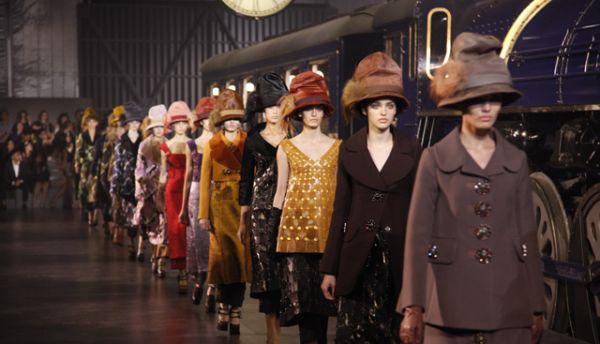


Photo: Daxue Consulting
By Colombus (哥伦布)
Issue 631, August 5, 2013
Lifestyle, Page 61
Translated by Laura Lin
Original article: [Chinese]
Bottega Veneta, the Italian luxury brand best known for its leather goods, recently renamed itself Bao-Die-Jia in Chinese. But because the Italian apparel has been commonly known by another Chinese homonym, Bao-Ti-Jia, the renaming caused some public outcry, not to mention enthusiastic debate on the Internet.
Bottega Veneta has declined to comment, except to say that it has never had an official Chinese moniker before.
But it is widely assumed that the Italian fashion house felt obliged to rename itself in Chinese simply because other Chinese businessmen had preemptively registered the name that was well known to the public.
In fact, many other successful foreign brands in China have experienced the same sort of so-called "name squatting.” The only difference is that instead of recognizing the setback discreetly, they often resort to legal recourse.
Hermès was probably the first apparel company to encounter this dilemma. As early as 1977, the brand had registered its English name and trademark in China — but not its Chinese one.
In 1995, a Chinese garment company swiped Hermès’ Chinese name, officially registering it. When Hermès realized this, it appealed to China's Trademark Review and Adjudication Board. Unfortunately, the company's complaint was rejected. When Hermès demanded a re-examination of the challenge, the committee didn't budge. Finally in 2009, Hermès was forced to register using another Chinese homophone.
According to Li Jingjian, an intellectual property lawyer, intellectual property rights do not enjoy transnational protection. The right of a trademark usually results from a registration, so the first to register is the owner – regardless of whether or not they’re the actual creator.
But there is an exception: China’s trademark law stipulates clearly that Chinese companies are not allowed to register and use the trademarks of those well-known in China or internationally. “My advice is that a name be registered as early as possible,” Li says. “It costs only 1,000 yuan for the application, and the registration is good for 10 years. But once someone has squatted the name, it’s very costly to get it back.”
The most famous case of a name dispute in China involved the French fashion brand Louis Vuitton. The company fought three infringement lawsuits in China, including one with Wang Jun, a businessman from the central city of Wuhan. Wang had registered “Louyiveiten” and a broadly used Chinese homonym of the French house as well as the company's logo for handbags, tags, fabrics and accessories. His goal was not so much to copycat the brand, but to blackmail the company in the hope of becoming its dealer in Wuhan. Wang lost the case.
So it seems that the lesser-known foreign trademarks that failed to register in a timely manner all risked the misfortune of having to choose a fresh Chinese name. Apart from the brands with a short history in China, this occurs most commonly within the car industry. One typical case involved Lexus, whose household name here has long been Ling-zhi. It was forced to rename itself Lei-ke-sa-si, phonetically.
Others include Toyota’s Camry series being renamed from Jia-mei to Kai-mei-rai. And Land Rover was forced to rebrand itself from “Road Tiger” to “Continental Tiger.”
Are Chinese Names Really Necessary?
Why do these foreign brands even want Chinese names? The Chinese are, after all, becoming better educated, and “Facebook” is better known than “Lian-shu.” Youtube has never had a Chinese name, and of course nobody really cares what Myspace is called in Chinese...
But Chinese naming is important for retail apparel.
That's because it brings a brand closer to consumers. In addition, a Chinese ideogram is far more significant than a series of English letters. Most foreign brands have very straightforward names based on the founder or the business. When they are translated into Chinese, the simplified phonetic transliteration and literal translation are the most common. Sometimes it is also a way of local marketing — an exotic homonym sends a message of authenticity.
Consider Coca-Cola. In English, coca and cola, respectively, represent the beverage’s two primary ingredients. But its Chinese name Ke-ko-ke-le (or “delicious happiness”) conveys the idea that drinking it will bring enjoyment. (Naturally, another Chinese company name-squatted Coca-Cola in China, but the correct Chinese name is used in diasporas such as Taiwan and Hong Kong).
Based on the same naming principle, Diet Rite is called Jian-Yi (“healthily agreeable”) because the Chinese would prefer that over something that acknowledges obesity or is associated with diets.
Of course, the most interesting Chinese naming happens with car companies.
Before 1992, BMW was called Ba-Yi-Ma in China, a sort of shortened transliteration because its full name was too long and too dull for the Chinese public. But when it was finally renamed Bao-Ma, meaning “treasure horse,” it was instantly associated with the ancient treasure horse in Chinese history. The Chinese consumer didn't have to be told that the brand was luxurious, because the name said it all.
There are also family names that translate particularly well in Chinese. For instance, the Chinese name for Goldman Sachs is Gao-Sheng, meaning “highly prosperous.”
Choosing a good Chinese name for a foreign brand is difficult because Chinese pronunciation very often implies dozens, or even hundreds, of characters. “Not only is the translation important, but the translated name must be related to the brand itself. That is to say, it needs to make sense,” says an insider at a Beijing design company.
It’s not just an art to choose a brand’s Chinese name — it's a science. Third-party consultants, computers and linguistic analysis are all employed for the task. And before it is finalized for use, a market survey is typically conducted to ensure not only that the name isn’t lost in translation, but also that it's icing on the cake.
News in English via World Crunch (link)

